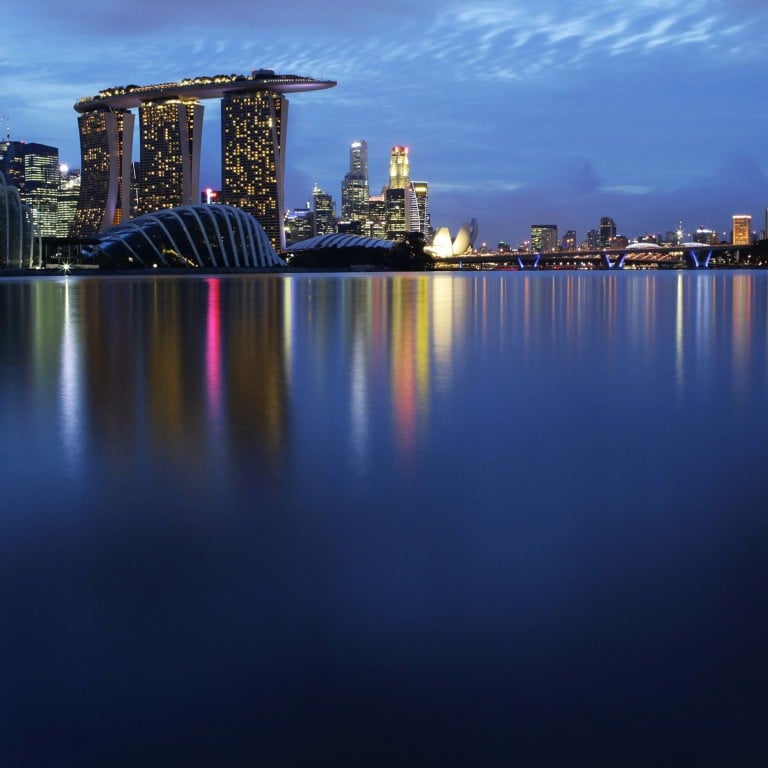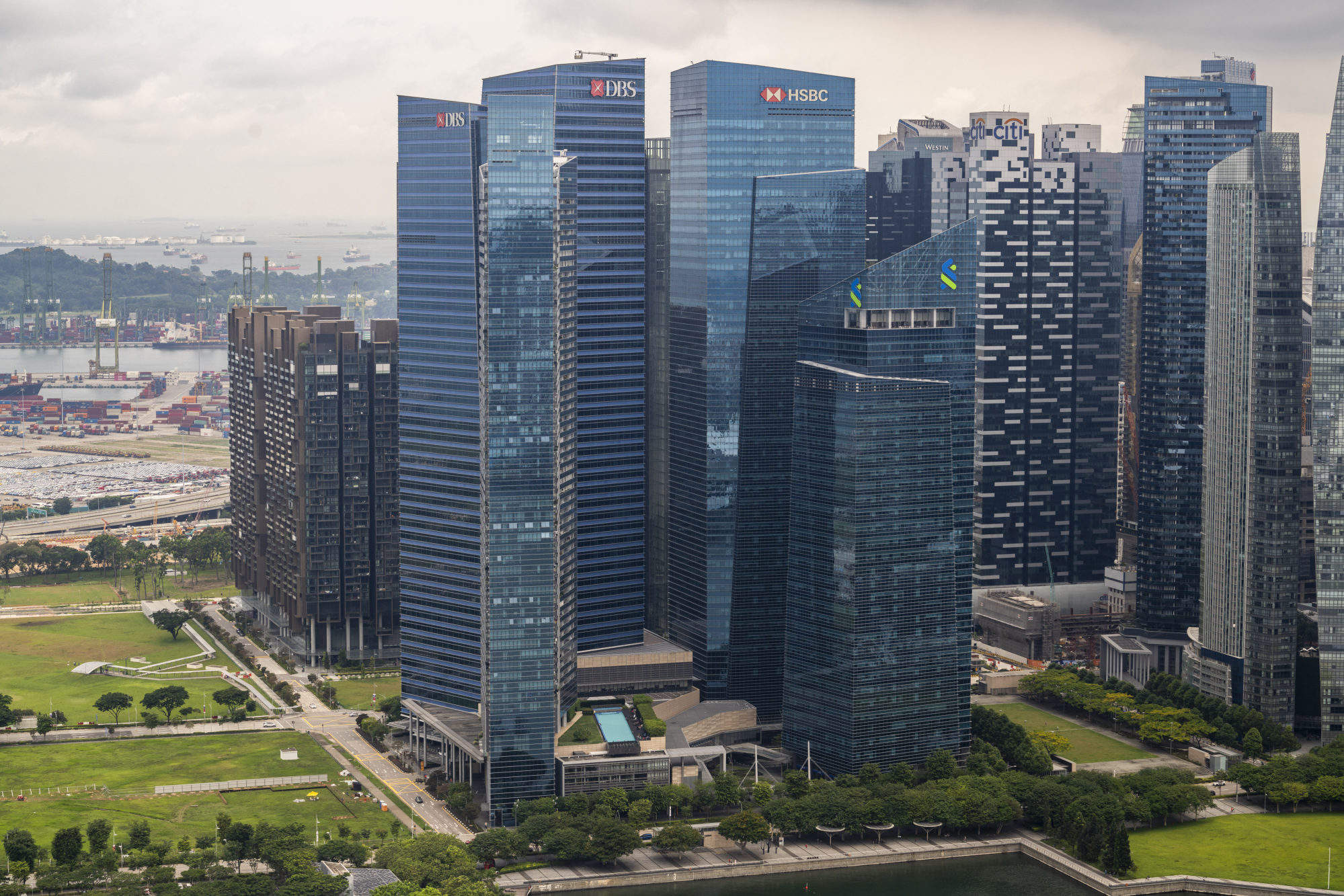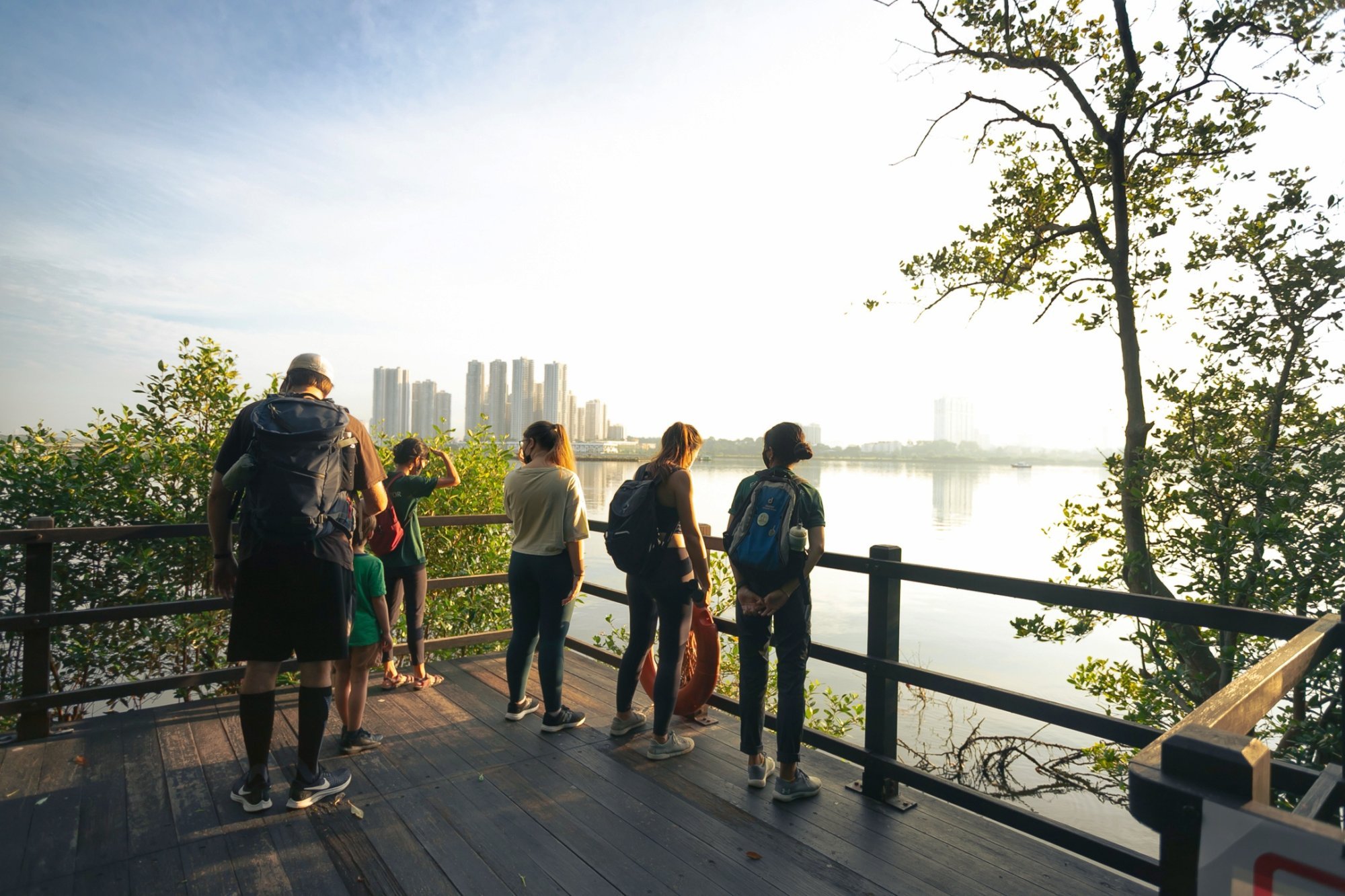
Singapore is more prone to sea-level rise than ‘virtually any country’ on Earth. So what’s being done about it?
- Roughly one-third of Singapore is less than five metres above sea level, making some US$50 billion worth of prime real estate vulnerable to flooding
- Its leaders have described the threat as ‘existential’ – and are pouring billions into shoring up the city state’s defences against the rising tides
“We are not planning to lose any inch of land permanently,” said Ho Chai Teck, a deputy director at PUB, the government agency coordinating the effort to save the nation’s shores. “Singapore will build a continuous line of defence along our entire coast. This is something that we take very seriously.”

Roughly one-third of Singapore is less than five metres (16 feet) above sea level, low enough for flooding to cause punishing financial losses. Some of its most prized property sits on vulnerable land: the skyscrapers overlooking the Marina Bay waterfront, known for its luxury mall and casino, and the towers that house giant banks such as Singapore-based DBS Group Holdings Ltd., Southeast Asia’s largest, and UK-based Standard Chartered Plc.
Assuming 1.5 degrees Celsius of warming, prime real estate in the city worth S$70 billion (US$50 billion) faces a high risk of flooding, according to Bloomberg estimates using data from real estate company CBRE Group Inc. Another endangered, and vital, part of the country is Jurong Island, where Shell Plc and ExxonMobil Corp. have oil and petrochemical operations.
“You’ve got small island nations, but they don’t have this much economic wealth,” says Benjamin Horton, a professor at Nanyang Technological University in Singapore who studies sea-level change. “The actual value of every square metre in Singapore is off the charts. This is a country more susceptible to sea-level rise than virtually any country in the world.”
‘Lives are at stake’: land-scarce Singapore fights to stem rising sea levels
A day’s bike ride along Singapore’s coastal paths will take you past glittering skyscrapers and scenic dams, beaches and mangrove swamps – diverse scenes that make clear how the country must carefully tailor its approach. What Singapore does will be keenly watched by other populous coastal cities, from Bangkok to Miami and Shanghai.
On a recent weekday, tourists and locals flew kites on a towering structure with dazzling views of Singapore’s skyline. But what they were standing on was much more than an attraction. It is a S$226 million dam called the Marina Barrage. Inside, seven giant pumps drain excess water into the sea during high tide and extreme rainfall. Currently, some kind of human-made barrier protects 70 per cent of Singapore’s coastline. But the city state will have to reinforce and improve those shields as tropical storms increase and sea levels rise.

The Hydroinformatics Institute and National University of Singapore are working with PUB to build a computer model simulating the combined effects of sea-level rise and rainfall on the country’s coastlines. When completed in 2025, it will help assess which areas are most vulnerable, based on the predicted depth and duration of floods.
“We have to look at this in a very dynamic way,” Grace Fu, minister for sustainability and the environment, said at a September event launching a new coast and flood protection institute. “Protecting us too much, you waste a lot of resources. If you build the coastal protection solution too low, then you will find that, several generations later, you’ll need to enhance it.”
Government authorities are already considering storm surge barriers on Singapore’s waterways. The barriers would generally be open, so ships can travel to their destinations. But during a big storm, they would close, encircling the city’s industrial areas.
Rising sea levels plunge Singapore into battle to stay above water
Other possible measures: raising the height of current coastal reservoir dykes; tide gates, which block water; and more embankments, typically raised piles of earth. Singapore is also building a huge additional terminal at its airport on higher ground, more than five metres (18 feet) above average sea level. Nearly 10km (6 miles) of drainage is planned to keep runways clear of water.
Businesses are getting into the act, too. Real estate company City Developments Ltd. has built barriers and water-level sensors at the St. Regis Singapore hotel, Palais Renaissance shopping centre and Republic Plaza skyscraper. In the business district, Frasers Property’s 38-storey tower has added floodgates.
“More still needs to be done,” said David Fogarty, CBRE’s head of ESG consulting services for Singapore and Southeast Asia. “Companies are thinking about rising sea levels, but they aren’t acting fast enough.”

At the Sungei Buloh Wetland Reserve, the roots of mangrove trees have all kinds of configurations. They can look like a pencil, a bent knee or a stilt. The tropical trees flourish in salty tidal waters. Their thick aboveground roots and trunks break waves and trap sediment – forming a natural barrier to rising seas.
But mangroves alone aren’t enough. Singapore is studying whether it can combine the trees with other barriers, called revetments, often made of stone or concrete. Experiments involving combined mangrove-rock revetments are under way at Kranji Coastal Nature Park, near the wetland reserve, and Pulau Hantu, an island off the southern coast.
Singapore is one of the most challenging places
Singapore’s existing sea walls and revetments limit one possible solution, encouraging the growth of more mangrove habitat, said Daisuke Taira, a mangrove researcher at the National University of Singapore’s Centre for Nature-based Climate Solutions. The country should preserve the current habitat of tropical trees, and their protective roots, researchers say. But it will likely have to rely more on barriers and other feats of engineering. When it comes to cultivating mangroves to keep the seas at bay, Taira said: “Singapore is one of the most challenging places.”
On Pulau Tekong, an island northeast of Singapore, giant machinery whirrs and clanks as workers stabilise soil and lay out a network of intricately designed drains and pumps. The equipment collects and channels rainwater into a pond. Excess can then be pumped into the ocean. This system, along with sea walls, enables Singapore to do something extraordinary: reclaim land that’s below sea level.
Boon for Singapore as Indonesia scraps 20-year ban on sea sand exports
Polders use less sand than the kind of reclamation Singapore has used in the past. That’s a huge advantage because it’s one of the world’s biggest importers of sand, which is expensive.
Singapore is adapting Dutch methods to the tropics. Its corner of the Pacific is calmer than the North Atlantic, so sea walls don’t need to be as high as in the Netherlands, according to JanJaap Brinkman, a director at Dutch water research institute Deltares, which is advising Singapore.
Still, Singapore has more intense rain, so its ponds, drainage canals and pumps are designed to cope with more water. Brinkman says the government is learning on its own and starting relatively small on Pulau Tekong: “Singapore wants to see if the technology is safe, and ensure everything is working well, before it takes the next step.”

